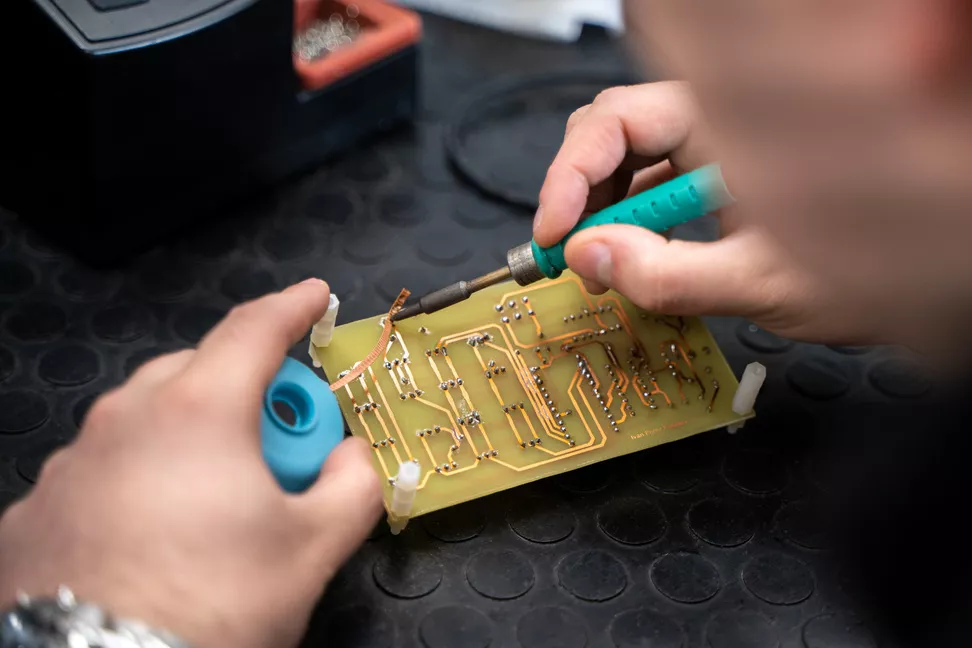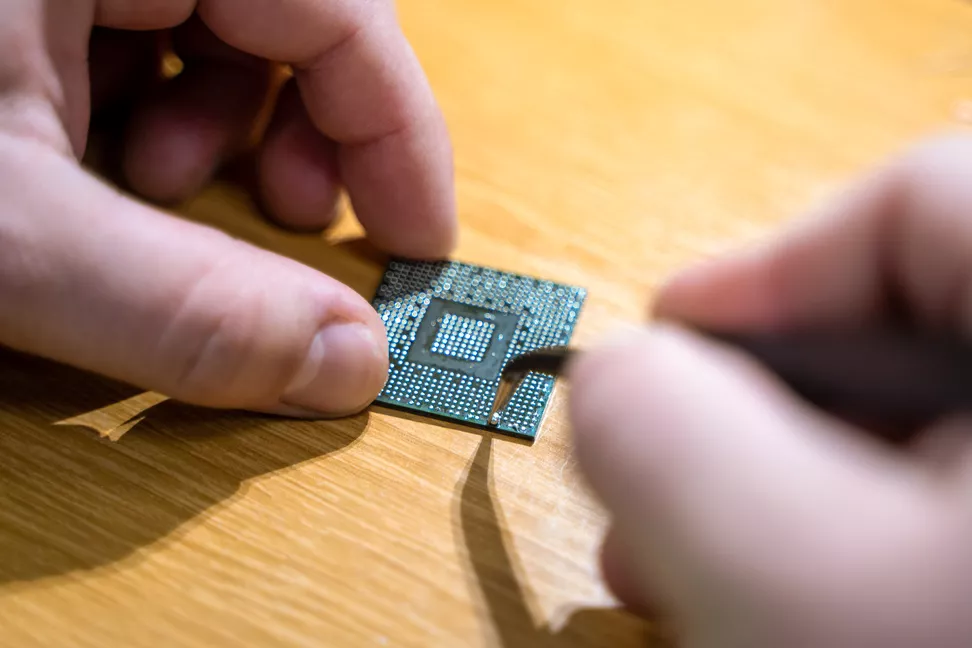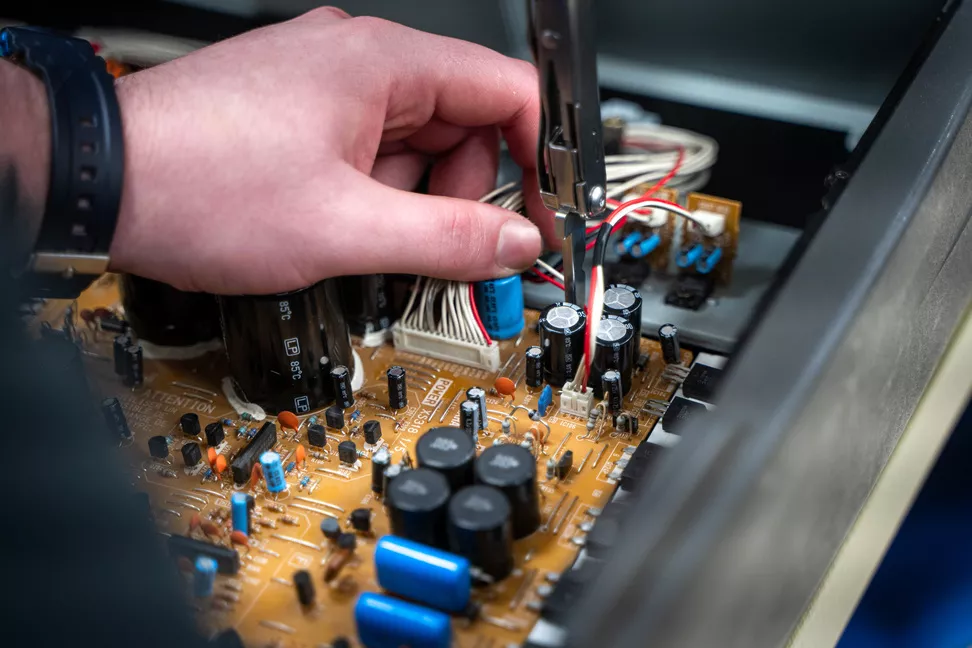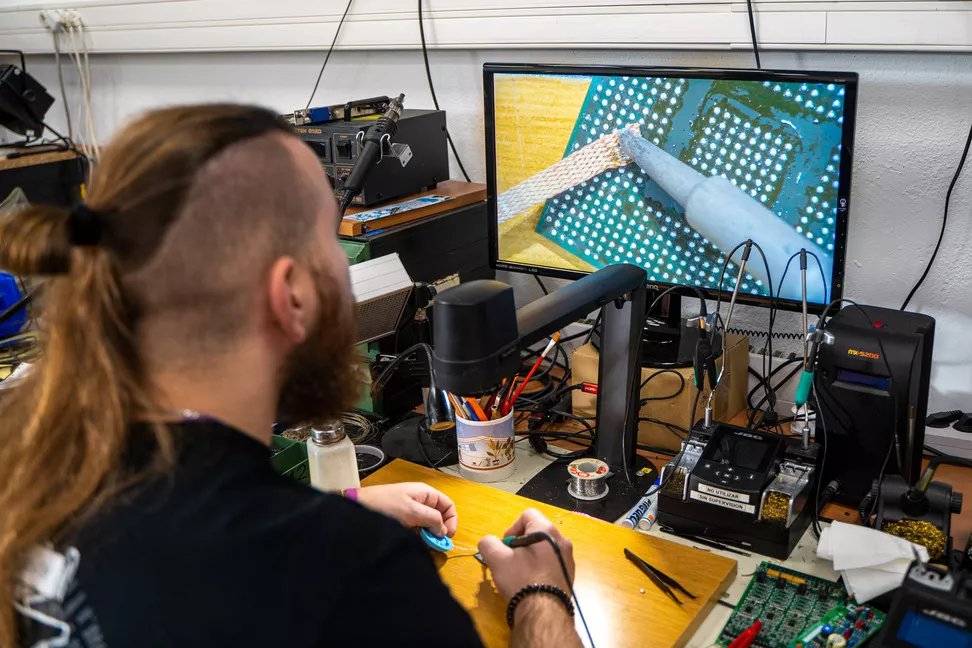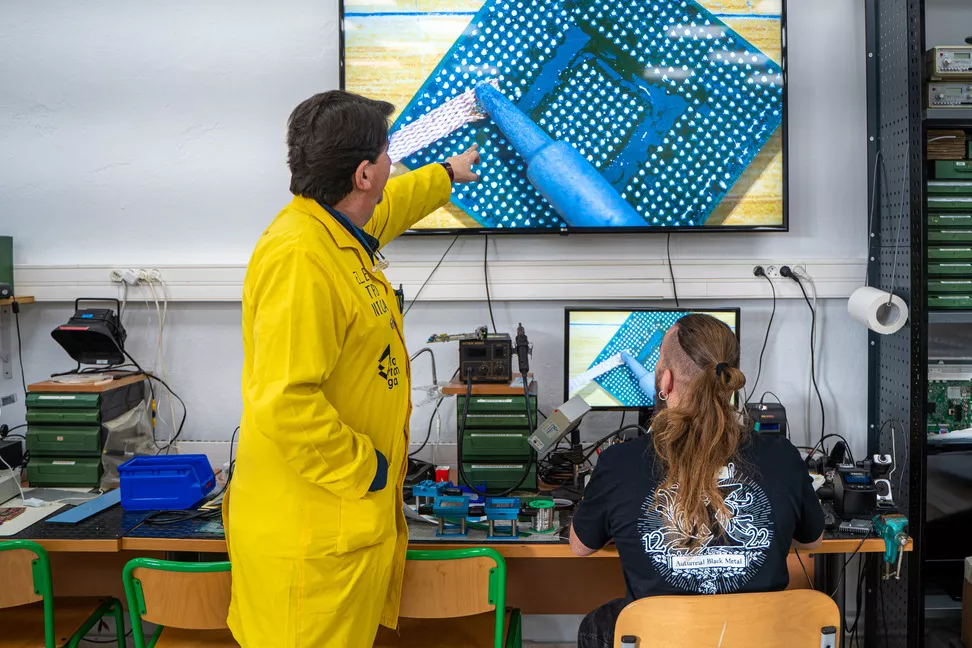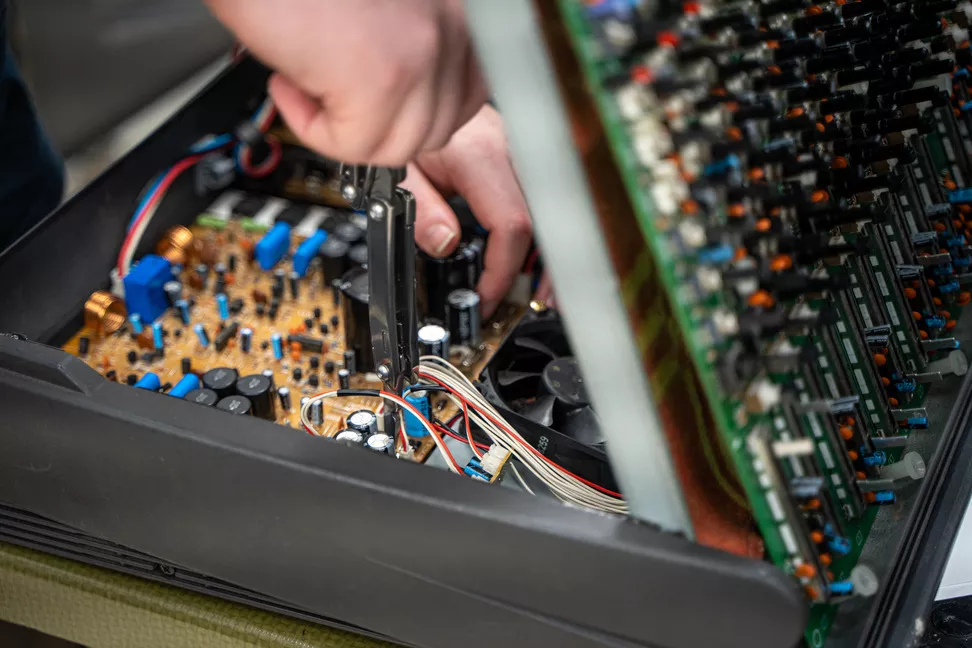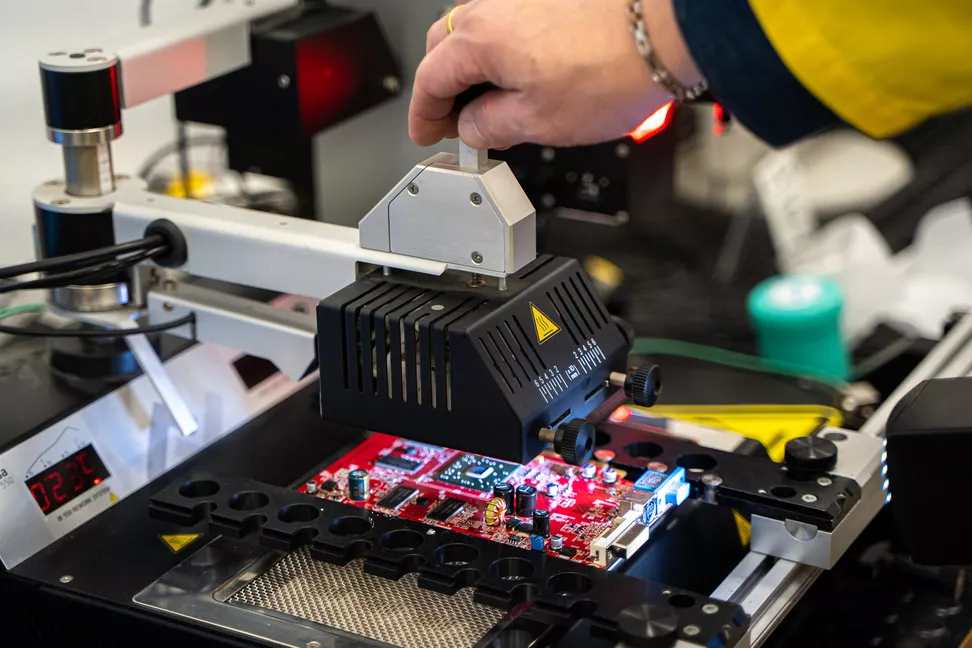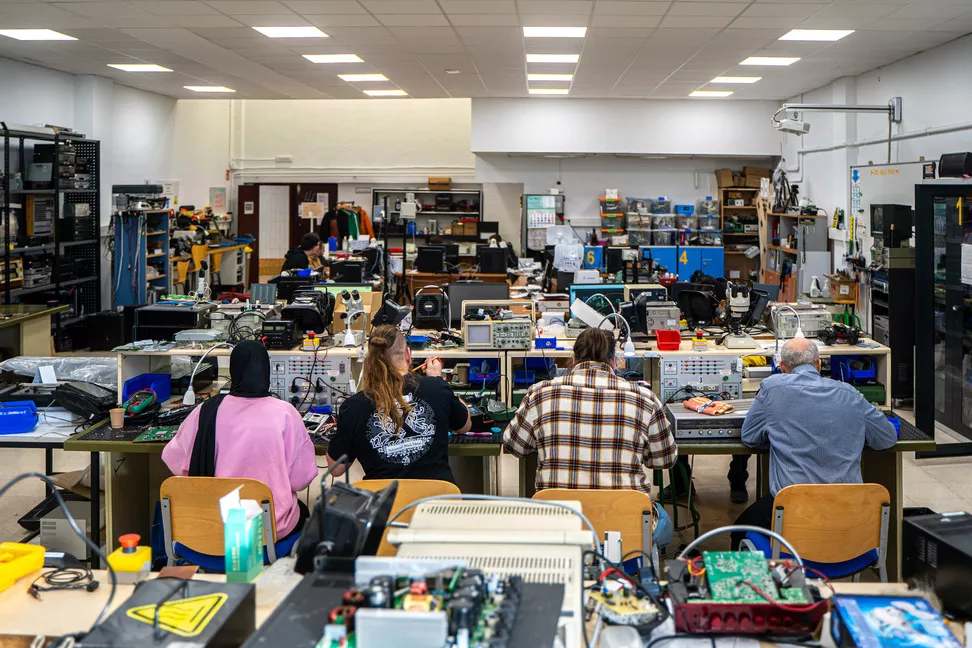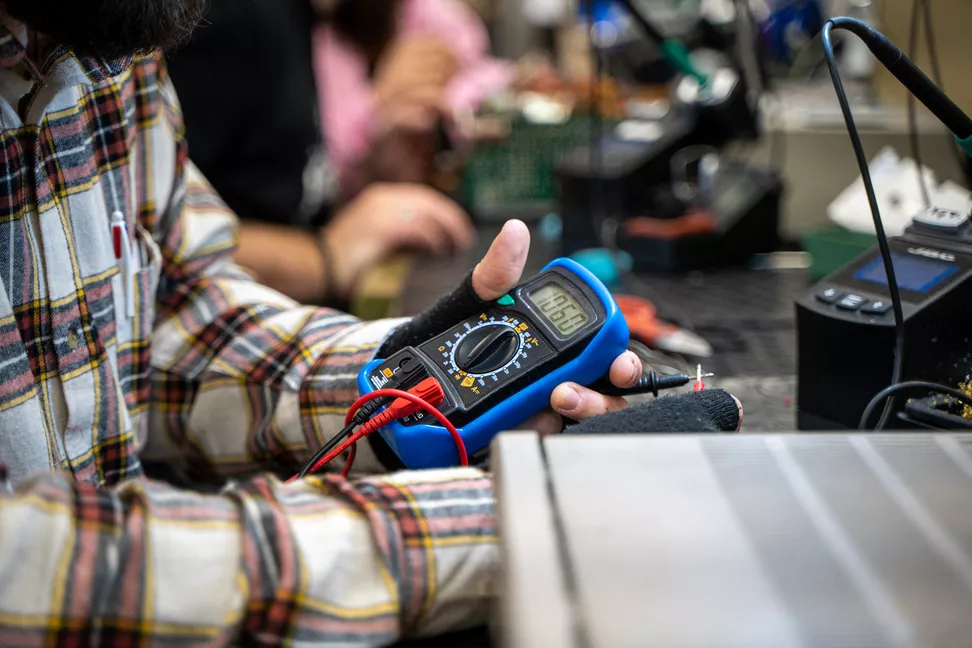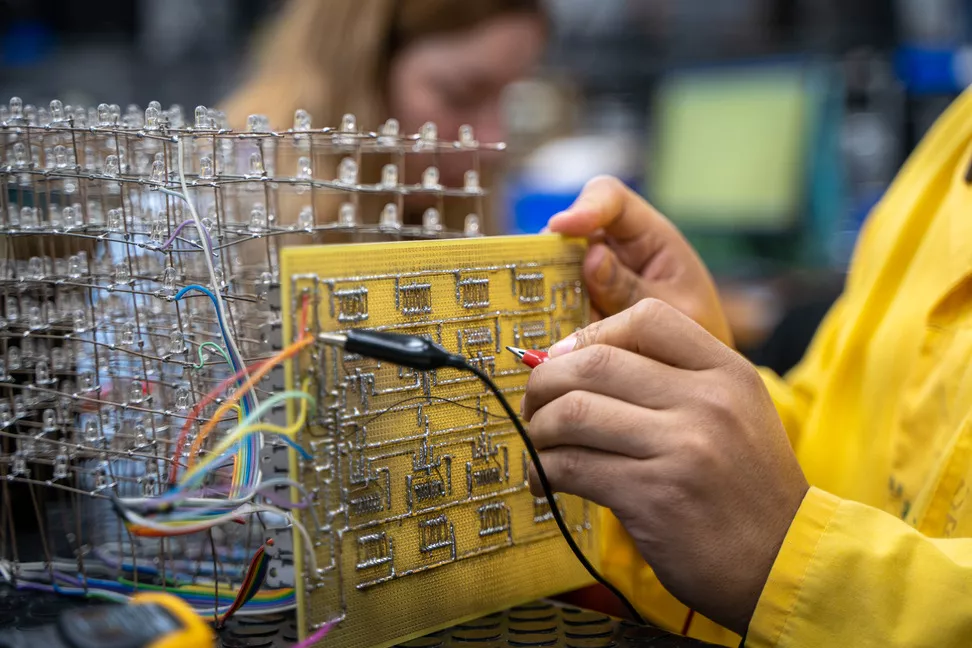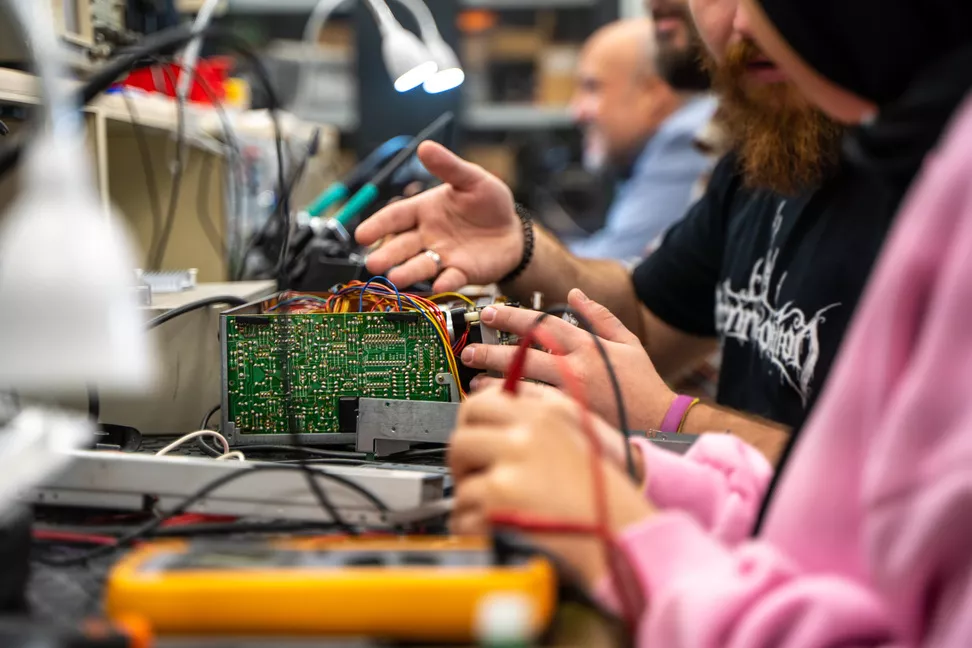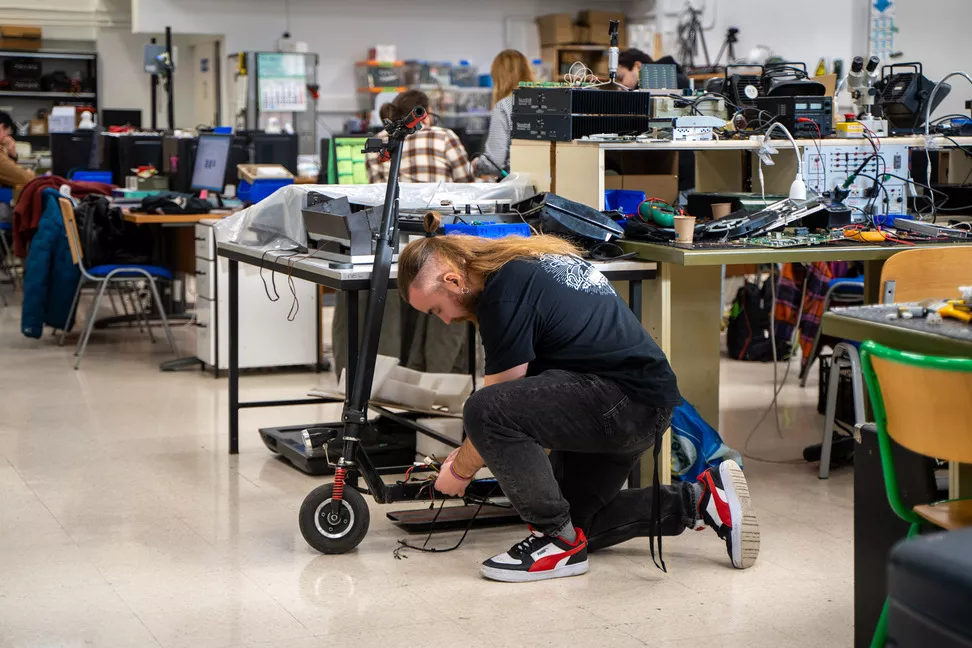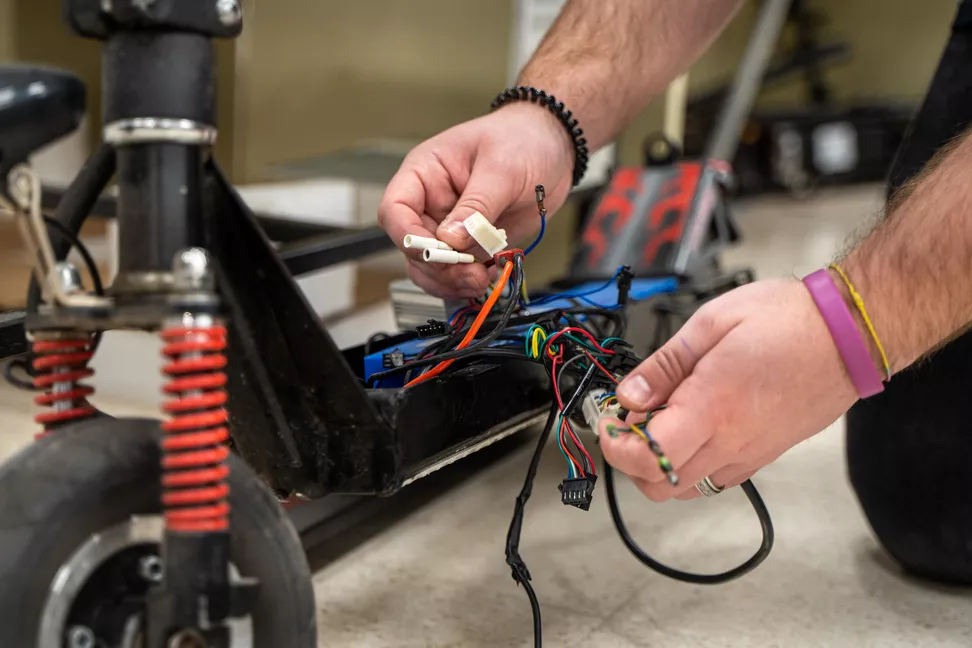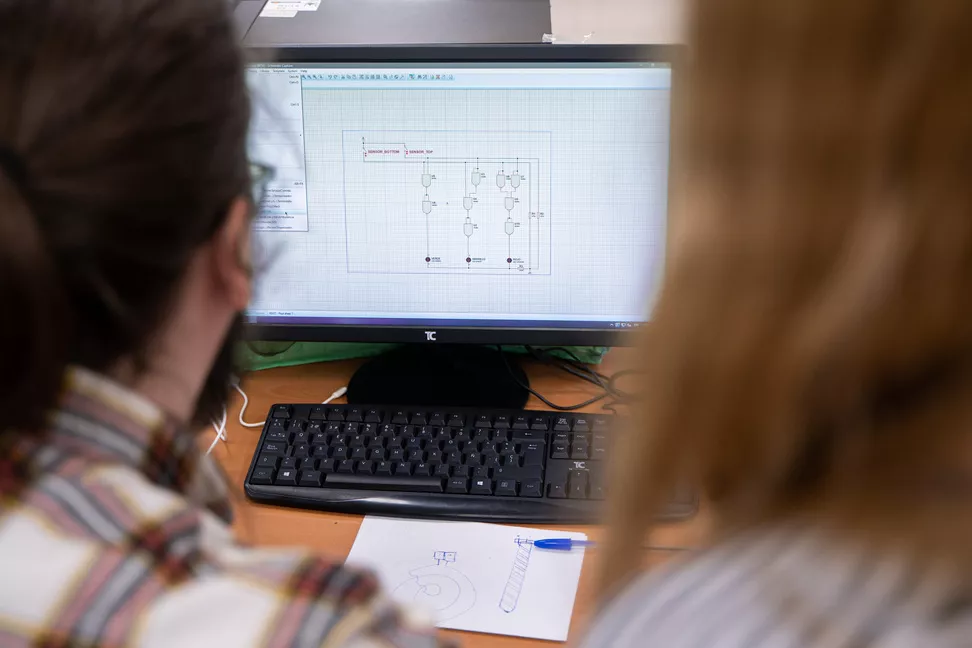The holder of this diploma will have acquired the General Competence with regard to:
- Maintaining and repairing electronic, professional, industrial and consumption systems and equipment;
- Planning and organizing maintenance processes, applying occupational and environmental risk prevention plans, quality criteria and the applicable laws and rules.
| Professional Module | Hours-total | Year |
|
Analogical Electronic Circuits
|
231 | 1st |
| Microporgrammable Equipment | 231 | 1st |
|
Maintenance of Voice and Data Equipment
|
132 | 1st |
|
Maintenance of Industrial Electronics Equipment
|
165 | 1st |
|
Personal itinerary for employability I
|
120 | 1st |
| Digitalization applied to productive sectors | 60 | 1st |
| Sustainability applied to productive sectors | 30 | 1st |
| Maintenance of Radio-communication Equipment | 160 | 2nd |
|
Maintenance of Audio Equipment
|
99 | 2nd |
|
Maintenance of Video Equipment
|
60 | 2nd |
|
Assembly Processes and Techniques and Maintenance of Electronic Equipment
|
260 | 2nd |
|
Infrastructures and Development of Electronic Maintenance
|
60 | 2nd |
|
Intermodular project
|
50 | 2nd |
|
Personal itinerary for employability II
|
63 | 2nd |
|
Professional English
|
63 | 2nd |
| Optional modules | 84 | 2nd |
Access to the High-level courses or modules requires compliance with at least one of the following conditions:
- To be in possession of the Post-compulsory High School Diploma or a certificate proving that all subjects of the Post-compulsory High School have been passed.
- To have passed the third year of the Unified and Polyvalent Baccalaureate (BUP): Accreditation through academic certification of having passed all subjects leading to the Post-compulsory High School regulated by Law 14/1970, of 4 August, on General Education and Financing of Educational Reform, after completing the third year of aforesaid studies (Order EFP/1210/2021 of November 2, which establishes the equivalence, for the purposes of access to vocational training courses, of certain studies and qualifications prior to the current education system).
- To have passed the second year of the Experimental Post-compulsory High School (Bachillerato experimental).
- To be in possession of a Technician certificate (Intermediate-level Vocational Training).
- To be in possession of a Higher Technician or Specialist Technician certificate, or equivalent for academic purposes
- To have passed the University Orientation Course (COU).
- To be in possession of any university degree or equivalent.
- To have passed the entrance exam for higher-level training courses (it will be required to be at least 19 years old in the year the test is taken or 18 for those who have a Technician’s degree).
- To have passed the university entrance exam for those over 25 years old.
Either you work as a:
- Technician in supervision and verification of radio and television system equipment and audiovisual production systems.
- Technician in repairing and maintenance of radio and television systems and audiovisual production systems.
- Technician in supervision and verification of broadcast system equipment.
- Technician in repair and maintenance of broadcast systems.
- Technician in supervision and verification of domotic and building automation and electronic security system equipment.
- Technician in repair and maintenance of domotic, building automation and electronic security systems.
- Technician in supervision and verification of local networks and telematic systems equipment.
- Technician in repairing and maintenance of local networks and telematic systems equipment.
- Technician in supervision and verification and control of radio link systems.
- Technician in repair and maintenance of professional audio equipment, video equipment and industrial equipment.
Or you continue studying:
- Professional specialization courses.
- Another Higher-level Vocational Training course with the possibility of establishing validations of professional modules in accordance with current regulations.
- University studies with the possibility of establishing validations in accordance with current regulations.
- Configure electronic circuits recognizing their block structure.
- Calculate parameters of analogue and digital electronic circuits, identifying the values of the input-output, signal conditioning, and processing stages.
- Verify the operation of analogue and microprogrammable digital electronic circuits using measuring equipment and analysis and configuration software systems.
- Prepare maintenance budgets, comparing technical and economic aspects to offer the best solution.
- Organize and manage corrective maintenance interventions according to the service level and optimizing human and material resources.
- Manage the supply and storage of materials and equipment, defining associated logistics and controlling stocks.
- Carry out maintenance interventions according to the technical documentation and condition of the equipment or systems.
- Diagnose malfunctions or breakdowns in equipment or systems based on the symptoms detected, information provided by the user, technical information, and installation history.
- Supervise and/or execute preventive, corrective, and predictive maintenance processes, monitoring timing and the quality of results.
- Commission electronic equipment and systems, ensuring they operate within technical acceptance parameters and ensuring quality and safety conditions.
These teachings include the knowledge required to carry out basic level activities for the prevention of occupational risks.

